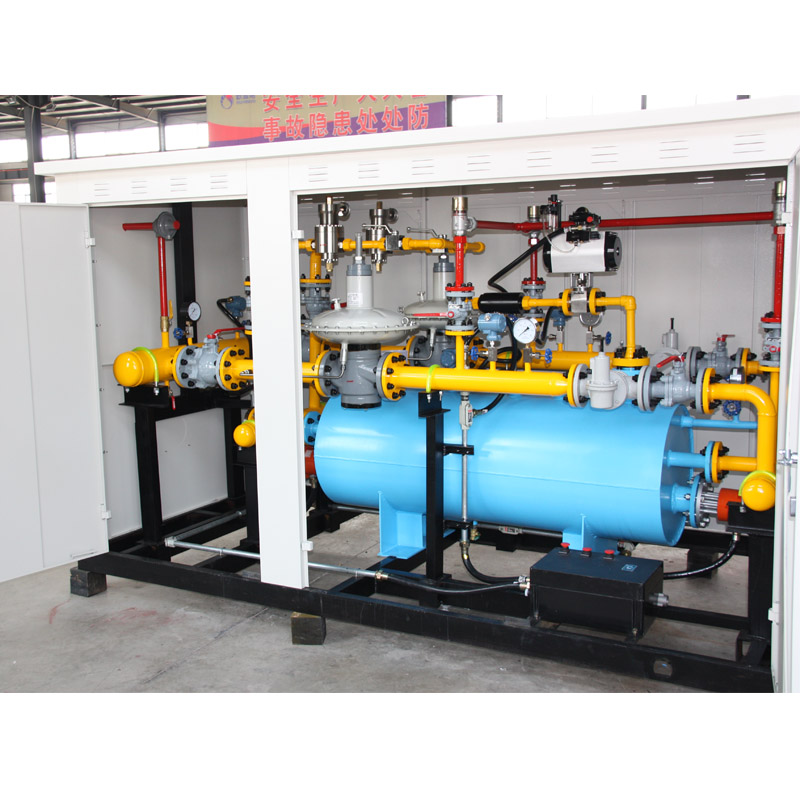
Oct . 22, 2024 11:40
Back to list
Natural Gas Heat Exchanger Efficiency and Performance Analysis
Heat Exchangers for Natural Gas A Comprehensive Overview
Heat exchangers play a crucial role in various industries, particularly in the processing and transportation of natural gas. They are essential devices that facilitate the transfer of thermal energy between two or more fluids, which can be gases, liquids, or a combination of both. This article delves into the significance, types, and operational principles of heat exchangers in the context of natural gas.
Importance of Heat Exchangers in Natural Gas Processing
Natural gas is primarily composed of methane and requires extensive processing before it can be utilized for heating, electricity generation, or as a vehicle fuel. During this processing, heat exchangers are employed at various stages to ensure efficiency and safety. They help in regulating temperatures within the system, recovering energy, and enhancing the overall efficiency of gas processing operations.
For instance, when natural gas is cooled to liquefy it for transportation and storage (liquefied natural gas or LNG), heat exchangers are crucial in maintaining the desired low temperatures. Additionally, in the regasification process where LNG is converted back to gas, heat exchangers transfer heat from the environment to the LNG, effectively returning it to a gaseous state.
Types of Heat Exchangers
Heat exchangers come in several designs, each suited for specific applications within the natural gas sector
1. Shell and Tube Heat Exchangers This type consists of a series of tubes, one set carrying the hot fluid and the other carrying the cold fluid. They are widely used due to their ability to handle high pressures and temperatures, making them ideal for cooling and heating natural gas.
2. Plate Heat Exchangers These units use plates to transfer heat between fluids. They are compact and efficient, suitable for applications that require high thermal efficiency and lower volumes.
.
4. Spiral Heat Exchangers These consist of two spiral channels, allowing for a compact design and effective heat transfer. They are particularly beneficial in systems with more viscous fluids.
المبادل الحراري للغاز الطبيعي

5. Double Pipe Heat Exchangers This basic design features one pipe inside another. While they are less efficient than other types, they are simple to manufacture and are often employed in smaller operations.
Each of these types has its advantages and is chosen based on specific operational requirements such as fluid properties, temperature, and pressure conditions.
Operating Principles
The fundamental principle behind heat exchangers is the second law of thermodynamics, which states that heat flows from a hotter to a cooler body. In the context of natural gas, the heat exchangers facilitate this transfer efficiently. The design of the heat exchanger determines the heat transfer area, flow configuration (counterflow, parallel flow, or crossflow), and the overall heat transfer coefficient, all of which impact performance.
In natural gas applications, the choice of the heat exchanger design is influenced by several factors, including the properties of the gas, the desired temperature change, and the flow rate. Engineers must consider factors like thermal efficiency, pressure drops, and maintenance requirements when selecting the appropriate heat exchanger.
Challenges and Innovations
Despite their importance, heat exchangers in natural gas operations face challenges. Fouling, or the buildup of material on heat transfer surfaces, can significantly reduce efficiency and increase operational costs. Innovations such as advanced materials and coatings, along with enhanced cleaning techniques, are being developed to mitigate these issues.
Moreover, with a growing emphasis on sustainability, the integration of heat exchangers with renewable energy systems is gaining traction. This trend aims to improve energy recovery and reduce greenhouse gas emissions in natural gas processing.
Conclusion
Heat exchangers are indispensable in the natural gas industry, ensuring efficient processing and safety in transporting gas. As technology evolves and the sector moves towards greater sustainability, the design and operation of heat exchangers will continue to adapt, playing a vital role in the future of energy. Their ongoing development, paired with innovative approaches to energy recovery and efficiency, will be critical in addressing the challenges faced by the natural gas industry in the 21st century.
Next:
Latest news
-
Safety Valve Spring-Loaded Design Overpressure ProtectionNewsJul.25,2025
-
Precision Voltage Regulator AC5 Accuracy Grade PerformanceNewsJul.25,2025
-
Natural Gas Pressure Regulating Skid Industrial Pipeline ApplicationsNewsJul.25,2025
-
Natural Gas Filter Stainless Steel Mesh Element DesignNewsJul.25,2025
-
Gas Pressure Regulator Valve Direct-Acting Spring-Loaded DesignNewsJul.25,2025
-
Decompression Equipment Multi-Stage Heat Exchange System DesignNewsJul.25,2025

